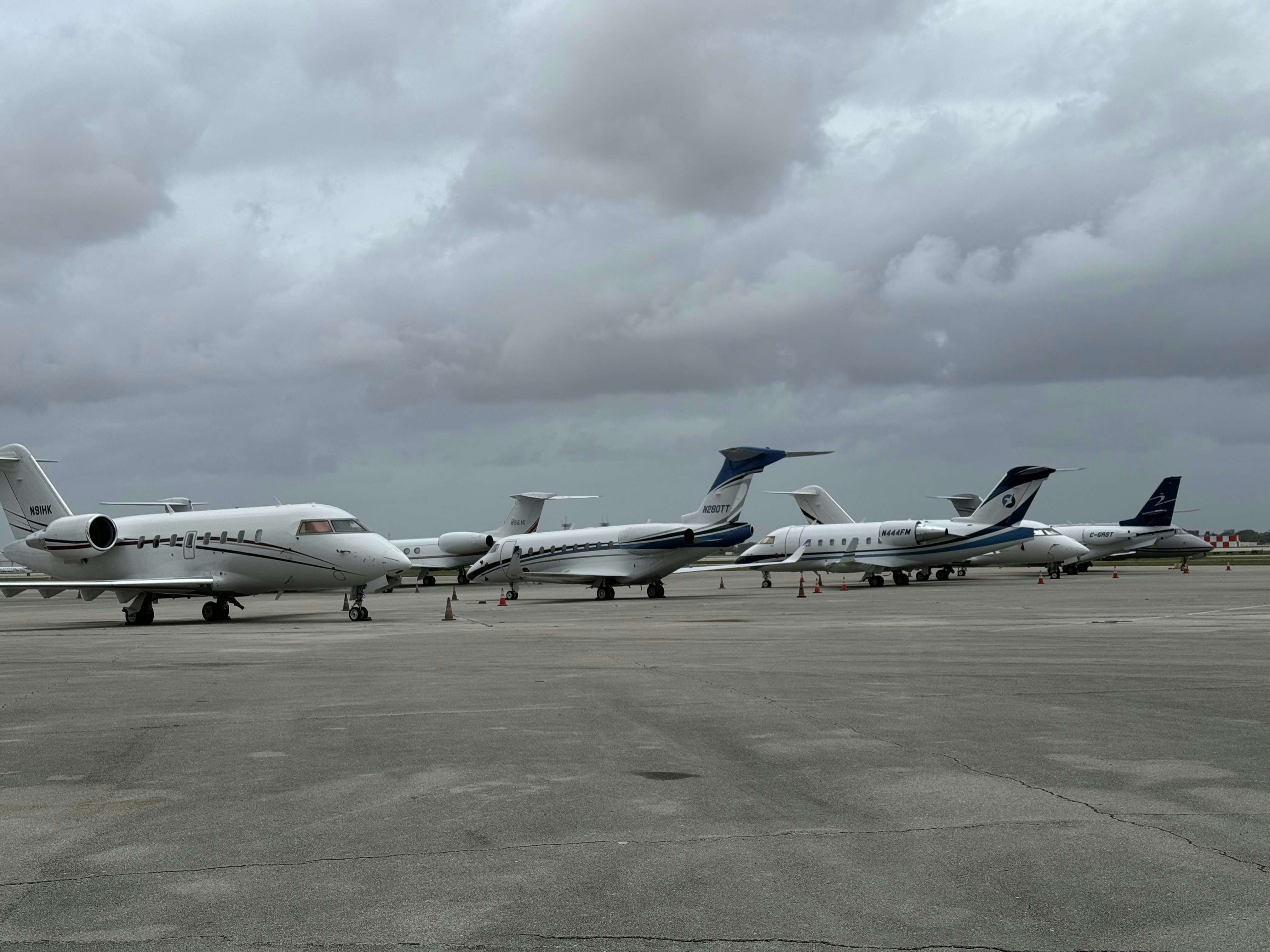The used private jet market is expected to remain stable with a shift to buyers during 2024, according to IADA members.

International Aircraft Dealers Association members say the market for used private jets continued stabilizing with a “subtle shift” to a buyers’ market.
Higher inventory and more reasonable prices are expected to provide a steady start for 2024, according to an update from the group.
Three months ago, the dealers were maintaining a bullish outlook.
Now a survey of IADA members indicated that about 75% of respondents expect pricing for midsize and larger private jets to fall, with inventory rising over the year’s first half.
The most significant changes are expected with large cabin and ultra-long-haul private jets.
About 85% of dealers believe that demand across the various aircraft size categories will remain relatively stable to slightly down.
“While annual business jet resale volume for IADA dealers was about one and a half percent higher in 2023, a more telling statistic showed an increase of 123 agreements to sell exclusively and 149 fewer new acquisition agreements, compared to 2022, reflecting more sellers than buyers,” says IADA Executive Director Wayne Starling.
He adds, “Overall, our dealers closed 1,422 preowned biz aircraft transactions in 2023, compared to 1,399 in 2022,” Starling says.
IADA members account for 50% of worldwide preowned private jet sales.
The dealers and brokers say that supply chains remain problematic among the obstacles.
Some transactions are on hold because of a shortage of parts and a lack of pre-buy inspection slots.
The challenges could impact Q1 transactions.
Global unrest and the traditional uncertainty associated with a US presidential election year highlight additional concerns.
Emily Deaton of Jetavia says, “Inventory levels began to level off in the early fourth quarter, and we also saw an uptick in buyer demand, which is typical for this time of year. I believe we will enter 2024 with fairly low inventory levels and stable aircraft values – presenting a good dynamic for sellers in the first half.”
However, Jim Worrell of Jet Access believes, “Elections always cause buying paralysis. This one will be no different.”
“As forecasted, the lack of a robust fourth quarter is allowing inventories to rise. While I am not expecting a precipitous drop in pricing, I do expect an increased pace of asset depreciation as the industry gives back some of the gains from recent years,” says David Monacell of CFS Jets.
However, the playing field is not even.
“Quality aircraft, top of each market, Level A are selling. Level B and C quality are slower to sell, and D will not sell,” says Axis Jets’ Matt Bosco.
“Brokers (and) consultants are as busy as ever working to put together deals. Now, we just need buyers willing to pull the trigger and buy. In short, we have a pricing chasm between most buyers and most sellers. Most buyers are not in a hurry because they are waiting for lower prices or even the big correction, and most sellers are not in a hurry because they are under no financial duress to sell and don’t feel the need to lower their expectations,” says Frank Janik of Leading Edge Aviation Solutions.
Lee Rohde of Essex Aviation adds, “Certain markets are more balanced; some markets continue to have low inventory and are more seller-driven, but in general, a much more balanced market is coming into place.”
“After 2022, when the industry saw an unsustainable number of business and transactions, we have begun to shift back to a normal market. The market is teetering on whether it’s a buyers’ market or a sellers’ market. However, instability doesn’t help our business either,” says Kyle Wagman of Leading Edge Aviation Solutions.
David Foster of NetJets‘ QS Partners adds, “Steady, but deals are harder to close. The Aircraft Purchase Agreements are driving aircraft deals to unrealistic expectations for pre-owned aircraft.”
Industry analyst Rollie Vincent predicts, “We expect demand to stabilize near 2023 levels next year. OEMs are having only limited success in increasing production rates due to supply network constraints, largely driven by limited experienced manpower.”
Still, some experts are tempering their remarks.
Aviation tax consultant Daniel Cheung says, “I can’t imagine we can keep pace in 2024. But then, we have been saying this for the last three years! I think the market will slowly get back to normal. 2023 has been another great year.”